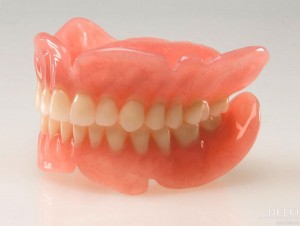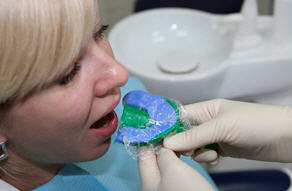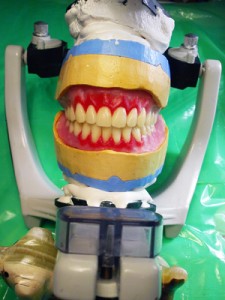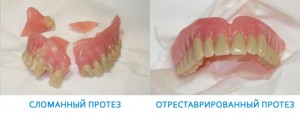Steps for making a complete denture

The use of complete removable dentures is most often needed by people of the older age group, who, as a rule, already have some experience in using dental structures.
The number of patients suffering from full adentia is gradually increasing, therefore, the issue of quality prosthetics is relevant at present.
The manufacture of removable dentures provides for certain laboratory and clinical stages.
The close interaction between the dentist and the dental technician during the construction process ensures the success of dental prosthetics.
The specifics of the work depends not only on the clinical situation in the oral cavity, but also on the patient’s mood.
- Before starting prosthetics, it is necessary to find out from the patient whether he has experience in using dental structures. If: “yes,” then did the patient experience any inconvenience when using the prosthesis.
- In order to identify the condition of the jaw bone, soft tissue abnormalities and other abnormalities, a clinical and radiological examination of the patient's oral cavity is mandatory.
- In some cases, prior to prosthetics, surgical interventions to remove the extracted teeth or alvelectomy can be performed. This approach allows the doctor to make a quality denture.
- The psychological preparation of the patient before the start of prosthetics plays an important role in achieving success.
Manufacturing steps
Technology the manufacture of removable structures includes yes the stages: clinical and laboratory.
Prior to the manufacture of the prosthesis, planning and evaluation of the aesthetic parameters of the patient who will use the dental structure are carried out:
- The patient’s appearance and facial features are evaluated.
- The shape and shade of artificial teeth is selected taking into account the type of dentition with a smile and a conversation.
Stages of manufacturing a complete denture can be represented as follows:

- Examination of the patient, diagnosis of the state of the dentition, the selection of an appropriate design.
- Impression of the jaw with a standard impression spoon. Depending on which design is chosen, the impression mass is selected.
- On plaster models of the jaws, the dental technician makes individual impression spoons.
- Impression using individual spoons.
- On working models, a wax base with occlusal rollers is made.
- Using the rollers, the relative position of the jaws is determined.
- Strengthening working models and occlusal rollers in the articulator.
- Making a future denture made of wax with acrylic teeth.
- Verification of the design in the oral cavity; occlusion, fit, aesthetics are evaluated.
- Ultimate wax design.
- Gypsum wax composition in a cuvette and wax replacement with acrylic.
- Polymerization of acrylic plastic, ditching of the structure from the cuvette.
- Denture finishing, grinding and polishing.
- Finished constructions fit in, checking fit, occlusion and aesthetics of the prosthesis.
- If necessary, the prosthesis is sent to the laboratory for revision.
- Delivery of the design to the patient.
How to make
Equipment manufacturing structures is reduced to the following actions:

- For the manufacture of gypsum models, the dentist immerses the imprints of the jaws with gypsum. On plaster models, a denture is made.
- The resulting models are set relative to each other so that the distance between them, both horizontally and vertically, coincides with the true distance between the jaws of the patient.
- For this purpose, bite rollers are made from wax in laboratory conditions.
- To obtain a more accurate impression, an individual impression spoon is made. It is made from acrylic and is a temporary plate that the dental technician models on the model.
- Finished wax rollers are given to the doctor to determine occlusion.
- Models with rollers are sent to the laboratory. After installing the models in the articulator, the rollers are removed, and instead, with the help of wax, the acrylic teeth are fixed.
- A fitting is carried out - fitting a wax prosthesis with teeth. The doctor checks the occlusion and aesthetics of the design. Due to the fact that the teeth are fixed on wax, the production of prostheses at this stage allows you to change the position and shade of the teeth.
- After the design is corrected, it is transferred to the dentist's office.
In the process of manufacturing a complete removable denture, the volumetric modeling method is used.
Volumetric modeling of a complete removable structure is a procedure whose purpose is to form the surface of the prosthesis, which corresponds to the relief of the tissues surrounding the structure, and the volume necessary to maximize the filling of the prosthetic space.
Ideally, the following conditions should be met:
- The design should fill the entire prosthetic bed.
- The polished surface of the prosthesis should repeat the relief of the surrounding tissue.
Subject to these requirements, the denture will be stably fixed in the oral cavity in the performance of its functions.
Video: “So do artificial teeth”
Assessment of the results of prosthetics
The results of the treatment are evaluated in the following areas:
- Based on subjective criteria: the patient's feelings at the time of construction and two weeks later and after a month.
- By objective criteria: implemented using chewing samples and other additional research methods.
Repairs
Breakage The prosthesis is a fairly common phenomenon, which can be caused by the following reasons:

- Poor material quality.
- Severe clinical conditions in the oral cavity.
- Violated the manufacturing technology of the design by a dental technician.
- Poor quality clinical practice by the dentist.
- Careless use of the denture by the patient.
- The presence of porosity of plastic teeth.
- Microcracks of teeth made of porcelain.
- Wear plastic.
Type of breakdown:
- Loss or breakage of an artificial tooth.
- Complete fracture of the structure.
- The presence of a crack on the prosthesis.
Regardless of the cause and type of structural failure, it is necessary to rectify the situation. Urgent manufacture of removable dentures? Maybe. But it will take some time. Not everyone can manage, for several days, without teeth.
In case of structural failure, it is necessary to contact the dental clinic, where a decision will be made about the possibility of repairing the prosthesis.